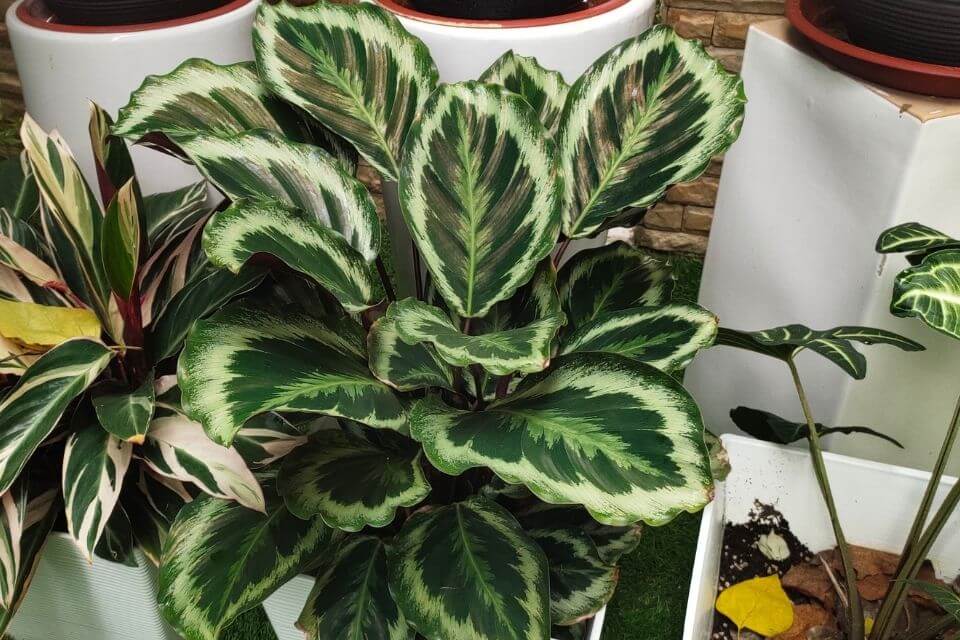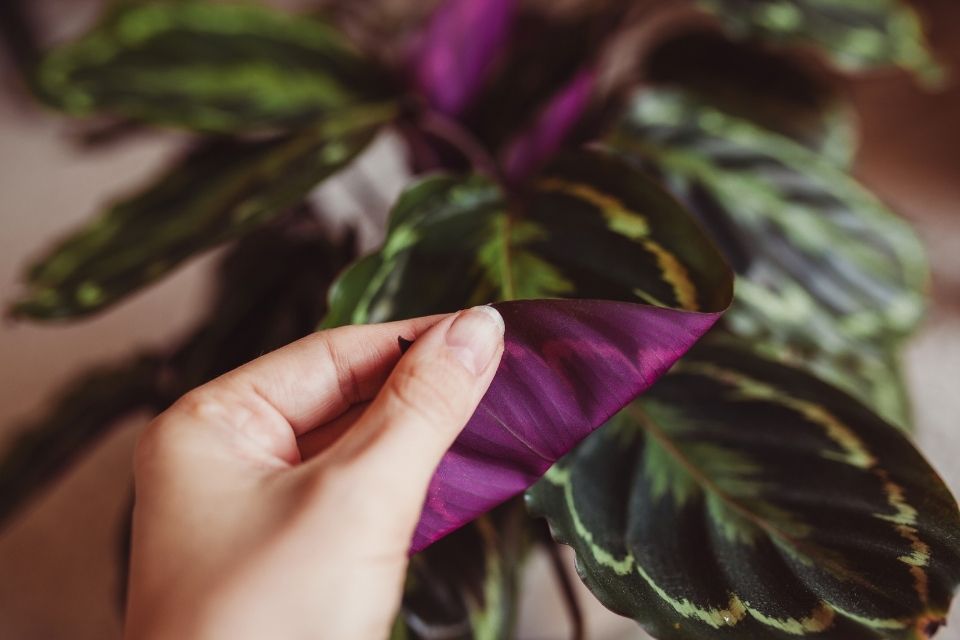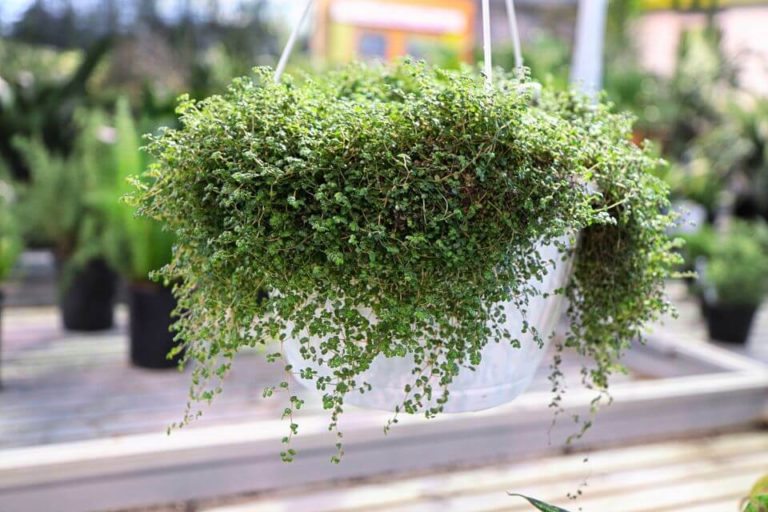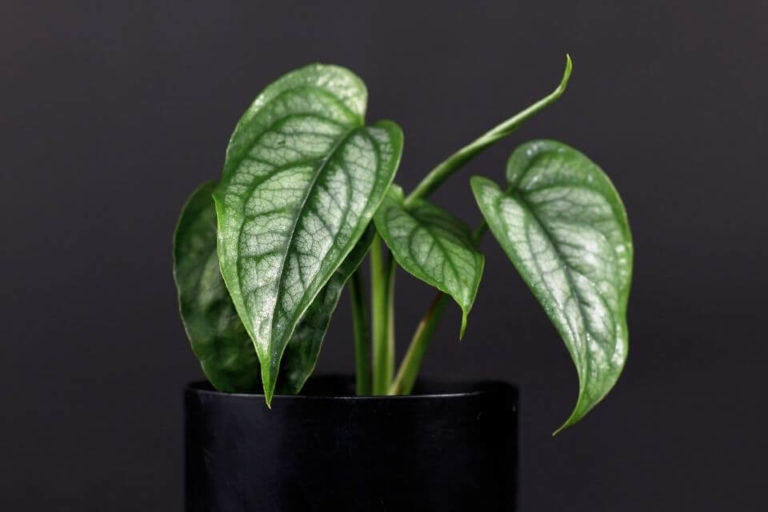Calathea Medallion Care – Complete Guide to Care, Propagation & Grow

What comes to your mind when you come to think about a plant to grow at home?
You must have thought of appearance and beauty. Beauty is one of the winning reasons plant lovers go for whenever they think of a plant to grow at home.
However, there are other factors that you should consider in terms of management so that you do not end up being disappointed when the plant dies. Talking about beauty, anyone would unconditionally go for Calathea Medallion.
In this Calathea Medallion Care guide, we help you with a guide that will help you find out whether or not it is the best option for you or not.
| Highlights: | |
|---|---|
| Common Names: | Calathea Medallion, Calathea Veitchiana, Medallion Calathea |
| Botanical Name: | Calathea veitchiana |
| Plant Family: | Marantaceae |
| Plant Type: | Tropical perennial |
| Origin/Native: | Tropical lands of Sought American Region |
| Care Level: | Easy |
| Grow Zone: | 10A - 11 (USDA Hardiness Zone) |
| Size: | Up to 3 feet tall |
| Soil Requirement: | Light and well-draining soil with low pH levels |
| Water Requirement: | Medium moisture levels |
| Sun/Lighting: | No direct sunlight, but require bright light |
| Temperature Req: | 65 - 85 °F (18 - 30°C) |
| Propagation: | Rhizome division |
| Toxicity: | Non-toxic |
| Flowering/Color: | White and purple |
| Uses: | House plant for decorative purposes |
TABLE OF CONTENTS
What is Calathea Medallion?
Calathea Medallion is also referred to as Calathea Veitchiana. It is a member of the Marantaceae family, which is why some people confuse it with being a prayer plant when in a real sense, it is not.
It has a habit of raising its leaves at night like a prayer plant. This Calathea variety is a tropical indoor plant that anybody can have as long as you can care for it.
Calathea Medallion Plant Uses and Placements
Calathea Medallion is basically used for two purposes when planted indoors. First, it is used as a Natural Air Purifier. Just like any other plant, it absorbs carbon dioxide and produces oxygen.
If you live in a house with many people, you might need a natural source of oxygen like planting a Calathea Medallion. The broad leaves of this plant ensure that the carbon dioxide absorption is very fast for better results.
Additionally, Calathea Medallion is essential in ensuring that you add some aesthetic value to your house. The plant appears in different leave colors. The pink, purple, and green colors in a single leaf must be very attractive at home.
Well, the plant does not flower when placed indoors, so you will not be struggling to control pollen grain in the house. If you are looking for a way to add aesthetic value to your home, then this is one plant that you can go for.
Indoor gardening can be very sweet but only when you know the placement need of the plant you are taking home.
For Calathea Medallion, you need to place it just next to the light source, which should not be direct sunlight. This is the only sure way to ensure that you supply enough light to it.
Is Calathea Medallion a Good House Plant?
Calathea Medallion is practically a good house plant becoming common in tropical areas and beyond. It is not poisonous, so you can be sure that it cannot harm any human or household pets.
However, it is too beautiful to be eaten by pets, so you might have to train your cats and dogs to avoid its leaves.
Calathea Medallion Size, Spread, and Appearance

Calathea Medallion starts growing in a small size, just as most plants, but it can grow up to 36 inches when fully grown.
However, if the environment is not conducive, it can be as short as 6 inches. The leaves spread perfectly during the day, but they tend to fold upright at the base at night.
Generally, the plant is dark green with thick leaves, making it attractive and just beautiful to have at home.
Calathea Medallion Care & Maintenance
Like any other house plant, Calathea Medallion is very sensitive, which makes it really need special attention. Otherwise, the plant might wither and die. Nobody wants to experience such.
We have tried to break the care need for Calathea Medallion so you can be sure of what is expected of you before you get to plant one. Have a look at the conditions below:
– Choosing Best Soil for Calathea Medallion
Like most house plants, Calathea Medallion will do well in soil rich in nutrients, porous, and well-drained. The porosity will ensure proper oxygen circulation, which any plant will need. Therefore when you buy your soil, you should ensure that you make it lose.
However, the availability of nutrients will depend on where you have obtained the soil. However, if you are not sure about the quality of the soil nutrients, you should consider adding fertilizer.
Vermiculite, Peat, and Perlite are some nutrients you can add to your soil, especially at the potting stage. If you cannot access such nutrients, you can also consider using charcoal on well-mixed compost manure and soil.
– Watering Requirement
Calathea Medallion also requires a good amount of water, although it should be done with moderation so that you do not have the plant chocked with too much water. The watering should be done every week.
This allows the upper part of the soil to dry up before you add more water. However, the watering should be made scarcer during winter so that the plant’s roots cannot rot to destruction.
As you regulate the watering, note that Calathea Medallion is not a drought-resistant plant, so you should not expose it to too much dryness.
– How Much Lighting Does It Need?
This plant needs medium to bright light, not direct sunlight. Calathea Medallion is an indoor plant, so you should ensure that you don’t take it outside for direct sunlight.
This is most likely to burn its leaves hence taking away the beauty you have been looking for in a plant. LED grow light is just enough for the plant.
– Suitable Temperature Levels
Temperature also comes to play when it comes to the care needed for Calathea Medallion. For better results, you need some warmth for this kind of plant. 65 to 85 degrees Fahrenheit can be a better deal for the plant.
This means that if you are in a very cold region, Calathea Medallion might not do well for you unless you are flexible in regulating the temperature artificially.
– Requirement of Humidity Levels
Calathea Medallion is practically a tropical plant. It, therefore, does well in an area with high humidity. Maybe you are wondering how you will make your house have high humidity. You don’t have to adjust anything to achieve this high humidity.
All you need is to place it next to rooms where it is likely to have some moisture in the air. For instance, you can have it next to that window facing your swimming pool.
Alternatively, you can regularly place it next to the bathroom or in the kitchen.
– Fertilizing Calathea Medallion Plant
Fertilizing is also a requirement when it comes to taking care of your plant. However, you need just a moderate amount of the same. Like most house plants, Calathea Medallion can do well on any all-purpose fertilizer.
Regulating the fertilizer use on the plant can be difficult for those with no experience. We recommend diluting the fertilizer to a quarter of its normal concentration before use.
You should apply fertilizer at the early stages of its growth just once a month. However, once the plant is full-grown, you should try as much as possible to reduce the fertilizing unless there is a sure need for it.
However, if the leaves become closed or bend downwards, you might increase the fertilizing. You should stop any foam from fertilizing during winter even if the plant is still at its growing stage.
– Pruning Calathea Medallion Plant
Calathea Medallion is an indoor plan meaning it does not overgrow. This means that it does not require regular pruning. You might end up not pruning it at all. Its leaves are large and oval and only grow on a single stem.
Therefore, it is an assurance to you that you will need not prune it. If anything, you could end up destroying the plant since you don’t expect to cut the single stem and expect the plant to keep doing well.

Re-Pot Calathea Medallion with Steps
Re-potting is very key for Calathea Medallion. It helps in providing more room for the plant to grow. It also ensures that you do away with the soil, which might be containing fungi, so you put a new one that is better aerated.
To re-pot your Calathea Medallion plant, follow these steps:
Step 1: Soil Preparation
In this case, the container you choose should be at least two times the size of the current one in circumference. Fill the container with soil to a third of its capacity.
Ensure that you make the soil as porous as possible with enough nutrients.
Step 2: Uproot the Plant
You then need to gently take out the whole plant to avoid having its roots break. Place the plant into clean water to wash out all the soil from the roots.
Once the roots are separated from the soil, you can check whether some of its roots are damaged and trim when necessary.
Step 3: Replant
Place the plant on the well-prepared soil, ensuring that the soil covers its roots to the level it originally occupied. Be sure not to insert more stem into the soil.
Step 4: Watering
Water the plant thoroughly while ensuring that you don’t put in too much water. The watering after the first one should be done at least every month so that the plant can remain healthy.
How to Propagate Calathea Medallion Plant
Calathea Medallion is the most preferred house plant since you only need to buy one, and once it is matured, you can propagate it to have more. Propagating, in this case, is done by dividing the roots scientifically known as the rhizomes.
It would help if you had a very sharp and sterilized knife to cut the tuber. It is the tuber that you now need to plant on your newly prepared soil which should be perfectly aerated.
Ensure that you only engage this process in your Calathea Medallion if you are sure that the mother plant is healthy. Otherwise, you might end up losing the plant.
Propagation can also be done on the leaves or the stem. However, this kind of propagation is very sensitive such that you should only do it if you are a professional or if you got some experience.
Otherwise, you might have to hire somebody to do it for you at a cost. You also risk having the person destroying your mother plant. This is why we recommend root propagation.
Ensure you cover the new plant with plastic to keep it warm until it starts to grow.
Common Diseases, And Problems
Like any indoor plant, Calathea Medallion can show some signs of disease and pest infection if not well taken care of. In most cases, the infection happens due to poor watering.
If you dump the soil with water, you are likely to attract fungus, thrips, aphids, and some other types of pests. The solution to this is simply by ensuring that you only water the plant when the upper layer of the soil is completely dried up.
The pest that you can expect with this plant is the spider mite. This should, however, not scare you since controlling such is very simple. Room temperature water is just enough to control such.
Sprinkle the water on the leaves concentrating on the lower part of the leaves. If you notice the mites before they fully take charge of the plant, you can depend on the water.
However, if they fully infest the plant, you might need to engage a pest control specialist to help in controlling the condition.
We might not conclude that these are the only pests and diseases that you will be dealing with. It all depends on what you expose the plant to.
We, therefore, advise that if you happen to see any unfamiliar condition, you should contact your gardener. This way you will be sure that you are in the best tract.
Why My Calathea Medallion Drooping?
Your Calathea Medallion may start drooping if it gets dehydrated. The dehydration can be insufficient watering, low humidity, or damaged roots. When the roots cannot supply enough water to the plant’s cells, they will start drooping.
The water supply makes the plant leaves strong, hence the beauty you are looking for.
The solution to this is simply looking for the reason that is likely to cause the improper water circulation and solving it. If you are not watering it well, you already know that more water is needed to prevent drooping.
Otherwise, you might be forced to check for other probable reasons for the drooping and take the right corrective measures. Still, your professional gardener should be in a position to help you.

Why My Calathea Medallion Leaves Have Brown Edges?
Calathea Medallion may appear brown at the edges when the plant fails to get enough water. Scientifically, the plant absorbs the water from the soil through its roots.
If the water in the soil is insufficient, the leaves might get very little water which cannot be supplied to the whole of it up to the edges. This explains why the leaves might appear brown at the edges.
Why My Calathea Medallion Leaves Curling?
Like any other plant, Calathea Medallion gets to curl its leaves to show you that it is not well-watered. The leaves are likely to roll up to look like they are tubes.
If you experience such, you will need to improve your watering, and you will see the plant coming back to life. Be sure to use pure water for this purpose.
Why Calathea Medallion Leaves Turning Yellow?
Yellow leaves could mean different things if you see them on your Calathea Medallion plant. The most common reason is overwatering. If you supply too much water to your plant, it is most likely to be witnessed by the yellowing of the leaves.
Always make sure that the upper part of the soil is dried up before adding more water.
Alternatively, the yellow leaves could mean that you have under-watered the plant or pests infest the plant. If you are sure about the watering, you might need a pest control specialist to help you know exactly the problem you ought to address.
Is Calathea Medallion Easy To Care For?
Calathea Medallion is easy to care for if you understand what it needs before going for one. If you don’t understand the temperature, soil, and humidity requirements, you might not be in a position to take care of it.
This is why we give such an inclusive guide to help you handle the plant. Otherwise, taking care of the plant if you meet the condition is simple. You don’t even need to prune the plant.
Where Should I Place My Calathea Medallion Plant?
Calathea Medallion is originally a tropical plant. If you live in the equatorial region, you can practically place the plant anywhere within your compound, including indoors. However, if you do not live in the equatorial region, you might have to place the plant indoors.
Ensure that it is closer to the source of light, and at the same time, you ought to allow some humidity around it. This makes the plant thrive well around the kitchen area or next to your washroom but well-lit with a favorable temperature.
If you are not in the equatorial region, do not place it directly under the sun.
Is Calathea Medallion Rare Plant?
Calathea Medallion was traditionally rare and could only be found in specific parts of the equatorial region. However, with indoor gardening taking over the world, this plant is readily available.
You can use social media platforms and search Calathea Medallion near you. You will be surprised how fast you will get your plant delivered.
Does Calathea Medallion Need Sunlight?
Calathea Medallion might need sunlight but only in the equatorial region since it was originally founded. Otherwise, it might not have direct sunlight. Just place it next to the window to get some light but not direct sunlight.
How Long Does Calathea Medallion Take To Root?
Your Calathea Medallion might take two to four weeks to root. However, you should leave the plant to perfectly root during this time as you cover it with plastic to keep it warm.
Do not keep checking since you might end up interfering with the rooting process.
Is Calathea Medallion Toxic To Humans Or Pets?
Calathea Medallion is practically not toxic to humans and pets. It, therefore, cannot harm those who live within your home. This explains why it is majorly preferred for indoor gardening.
Do Calathea Medallion Flowering?
Looking at the origin of the Calathea Medallion, you expect it to bloom in beautiful flowers. Yes, the plant is a flowering species that blooms up in the equatorial region.
However, it might not produce flowers when planted indoors since indoor gardening does not give room for pollination, hence no flowering. Flowering can only happen when you have both a female and a male plant of the same species.
The bottom line here is that you should not expect flowering when you place the plant in a covered environment.
However, the leaves are attractive, which replaces the flowers when planted indoors. Can’t the purple, silvery, and green foliage replace your need to see flowers?
Where Can I Buy Calathea Medallion Plant?
Buying Calathea Medallion is the simplest thing you can do today as long as you have the required amount of money which varies from one region to another. The way to go about this is to check for the sellers online so that you can have one just near you.
Once you get the online vendor, check their website to ensure that they are verified sellers. This way, you will escape from online scammers.
Alternatively, you can check for the plant with any gardener next to you. One thing about this plant is its popularity. It will be very difficult to miss Calathea Medallion with any plant gardener near you.
Do not pay for delivery fee when you can get it near you.
Takeaway
Planting Calathea Medallion in your house is one of the most beautiful things that any home gardening lover can go for. Maintaining this plant is very simple if you have gone through this guide.
I can assure you that you can take care of this plant and enjoy the beauty and the air purification that comes with it. You don’t have to work hard to have this plant at home.
Remember, there is no pruning needed. If anything, you don’t have any work to get except for watering once the condition is favorable. So far, there has not been any foam of complaint from those who have had this plant at home.
Instead of trying any other plant, you should go for this being sure that you will not be disappointed.






